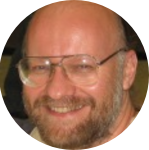About This Project
Enzymes used in carbon fixation could revolutionize carbon capture but require significant re-engineering to do so. Recent breakthroughs in AI for protein analysis and design have resulted in an unprecedented new capability to prototype highly complex protein engineering tasks. We are using these tools to overcome challenges with low CO2 absorption rates and high CO2 regeneration energies in direct air capture by borrowing from biological pathways that have already solved these challenges.
Ask the Scientists
Join The DiscussionWhat is the context of this research?
Atmospheric CO2 removal (CDR) and point-source capture (PSC) of CO2 are well-accepted as being necessary for successfully decarbonizing within climate goals (1). Direct air capture (DAC) is a CDR pathway with ideal verifiability and durability. Both DAC and PSC are cost constrained, primarily by the CapEx of the gas contactor and the energy required to drive large swings in temperature or pH to regenerate CO2 from the capture material (2).
Those high cost and energy requirements are driven by a thermodynamic trade-off between the rate of CO2 absorption and the CO2 regeneration energy: CO2 capture materials with high absorption rate, which reduce cost by reducing the gas contactor size, typically have high CO2 regeneration energy, and vice versa (3).
What is the significance of this project?
Carbonic anhydrases (CAs) catalyze fast CO2 absorption in solvents with low CO2 regeneration energy, resolving the tradeoff described above (4). Thermostable/ultrastable CA compatible with industrial conditions created via protein engineering (PE) can already reduce PSC cost >30% (5,3).
Advanced protein design AI could help create ultrastable carbonic anhydrases which would be useful for DAC and PSC. While modeling is needed to quantify application-specific benefits and target CA properties, PE for ultrastable CA can begin now and later be adapted to specific uses. Interestingly, CA is already involved in 30% of all terrestrial carbon fixation (6), highlighting another source of biological inspiration that can be drawn from to solve challenges faced by current PSC approaches.
What are the goals of the project?
While modeling analyses are ultimately required to provide target properties for ultrastable CAs to be used in development of novel CA-enhanced DAC and PSC, initial efforts to use AI-based PE and screens of many variants should target many-fold CA stability improvements compared to the state-of-the-art while retaining high activity (kcat/kM ~108 M-1s-1). For a comprehensive discussion of state-of-the art CA engineering and performance, see (7) and (4).
Changing the chemical strategy for CO2 absorption and regeneration would be a massive boon to PE. By de-risking a new approach that relaxes requirements like pH tolerance, a simpler and more effective PE strategy can be undertaken. Reaction rates depend on multiple factors, so shifting the reaction equilibrium could provide gains as well.
Budget
-
 Project Timeline
Project Timeline
We aim to complete this work in 18 months. Our strategy is to first de-risk our modified PSC absorption/regeneration chemistry, providing early validation of a key hypothesis. Only then do we begin the most resource intensive PE work, thus ensuring we are mitigating our biggest risks first and maximizing our chances of success.
May 04, 2024
Report out from key de-risking experiment for our modified absorption/regeneration chemistry
Jul 01, 2024
6 month report
Dec 31, 2024
12 month report
Jul 04, 2025
Final deliverables
Meet the Team
Vikram Krishnamoorthy
Vikram's been working a wet lab since middle school, In high school, he designed and ran experiments that led to recognition as an Intel Science Talent Search Semifinalist. He graduated from the University of Pennsylvania’s Life Sciences and Management dual degree program with a bachelor’s from Wharton with dual concentrations in finance and healthcare management, and a bachelor’s in biology with honors. His undergrad research experience ranged from high throughput CRISPR knockout screening in iPSCs to studying lncRNAs in Arabidopsis. At college, he founded Etcetera Bio, Here, he designed an automated nano-injection system to precisely deliver genetic payloads of arbitrary size into cell nuclei using Carbon Nanopipettes. The vision was to enable engineering of highly sophisticated cell therapies with genetic logic and safety switches. He funded R&D with a small amount of dilutive funding from Pear VC and grant funding from various sources including Y Combinator’s Startup School Grant. Through this startup, he found his way to Biotech Without Borders and the community bio movement
Preethi Krishnamoorthy
Preethi is a computer scientist with experience in Artificial Intelligence, particularly LLMs. Her path into computer science was through computational biology, where her first research experience involved developing machine learning models for classifying breast cancer biopsy images using deep neural networks and techniques like K-Means clustering and Random Forest – techniques that are relevant again as we start using protein embeddings for finding candidates and classification. She’s currently continuing to hone her skills as a junior studying CS and Robotics at Carnegie Mellon University’s School of Computer Science, where she’s involved in everything from engineering prosthetic hands to designing wearables. In addition to her academic background, an entire summer spent implementing end to end pipelines for fine-tuning and evaluating LLMs has honed a skillset that is quite valuable for this project. This type of work, writing new differentiable potential functions for diffusion and fine-tuning embedding models for classification, often requires going beyond the documentation and diving into the research papers behind the transformers, so we’re glad to have someone with that skillset on this team.
Patrik D'haeseleer
Patrik D'haeseleer is a research scientist at anational laboratory, where he has worked on computational biology of biofuels and host-pathogen systems. He has a PhD in Computer Science from UNM developing early tools for large scale gene expression analysis, and did a postdoc at the Church Lab in Harvard on systems biology. He has 4+ years experience using state-of the-art protein structure prediction and design tools such as TrRosetta, RoseTTAFold, AlphaFold, ESMFold, TRDiffusion. Patrik co-founded Counter Culture Labs 10 years ago, a community lab for biotechnology in Oakland, where he currently serves as Secretary, leads community projects, and teaches computational biology, microbiology, synthetic biology, and art & science classes.
Project Backers
- 0Backers
- 0%Funded
- $0Total Donations
- $0Average Donation


